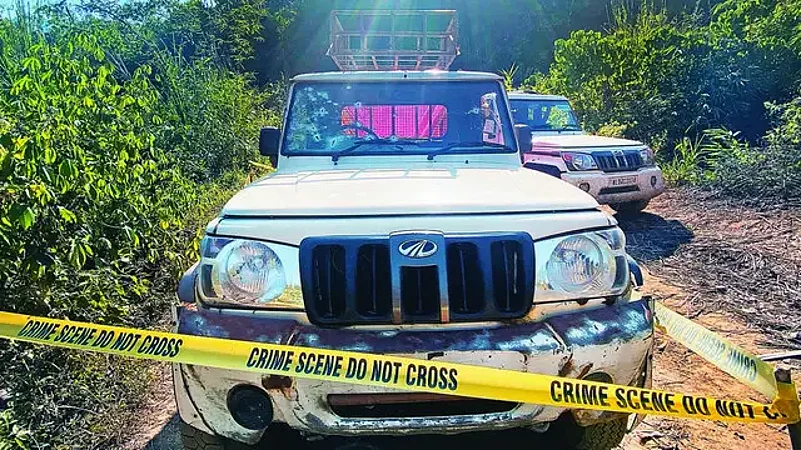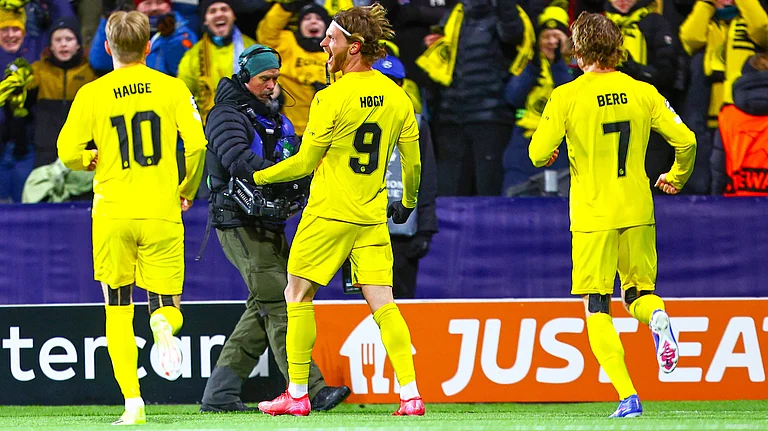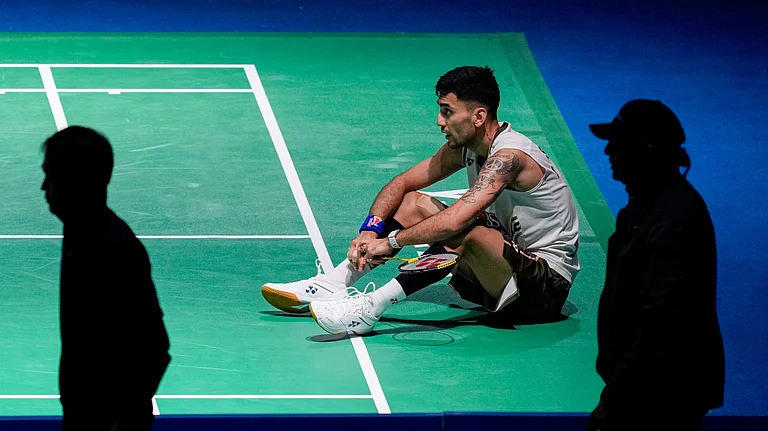Deep in the forests of Kerala’s Wayanad district, on February 18, 1970, a burst of gunfire shattered the calm. Minutes earlier, a 31-year-old man, with a thick mop of hair and a pencil moustache, was roused from his sleep by policemen who had raided the safehouse at Thirunelli.
Every year, Thirunelli village hosts thousands of mourners who travel to a local temple there to perform the last rites of their deceased kin. But on that February night in 1970, Thirunelli was to witness a different kind of last rite.
The man they rudely woke up was Arikkad Varghese, a Naxal leader locally called Kerala’s Che Guevara, who would become the victim of one of the first fake police encounters recorded in the southern state. Varghese was a wanted man, who had attacked a police outpost in Wayanad two years ago to steal weapons. Two cops were killed in that assault.
The echo of the bullets that killed Varghese, and the outrage that followed, faded with time. But in 1998, the constable who had pulled the trigger, Ramchandra Nair, confessed to the authorities that he had shot the Naxal leader in cold blood on a superior’s instruction. Earlier, a guilt-ridden letter written by Nair to a friend about the fake encounter had leaked to the press.
Based on Nair’s testimony, a special CBI court in 2010 convicted a retired Inspector General of Police for the fake encounter. The order was also upheld by the Kerala high court. And in 2021, Varghese’s kin were also awarded a compensation of Rs 50 lakh, 51 years after unsanctioned police bullets killed him.
Controversies have invariably plagued police, paramilitary and army encounters across the length and breadth of the country. More in some states, less in others.
Hyderabad horror
In November 2019, a 26-year-old veterinarian was gangraped, killed and her body burnt near Hyderabad, sparking countrywide outrage. Four persons were arrested in connection with the brutal crime. Less than a fortnight later, the four accused were killed in a police encounter along the Bengaluru-Hyderabad highway. There was popular cheer from the amphitheatre of death, with chants hailing the cops as heroes.
The police narrative was standard. The accused, who were being taken to a site to recreate the crime scene, had tried to attack their escorts in order to escape, and were killed in self-defence.
But a Supreme Court-appointed judicial commission, headed by retired judge V.S. Sirpurkar, picked up flaws in the police account. The bullets unleashed by the encounter cops provided crucial tell-tale signs for the commission to nail the inconsistencies in it.
“It’s alleged that the deceased suspects received all their bullet entry wounds in the front side of their bodies, since they turned towards the policemen. The absurdity of this contention ought not be lost on the Commission… Even if it were assumed for a minute that they were, in fact, turning back while they were running in order to fire at the police, the injuries on the front side of Jollu Shiva and Jollu Naveen (two of the accused), who admittedly did not fire any weapon, cannot be explained, since they would only be running towards their alleged escaped route,” the Commission observed. The case is now being heard by the Telangana high court.
ALSO READ: Fake Encounters In India: Laws, Flaws & Fear
Makings of an encounter
Article 21 of the Constitution guarantees the country’s citizens their fundamental right to protection of life and liberty. But fake encounters, cushioned by provisions under Section 100 of the Indian Penal Code (IPC), often tend to punch through the constitutional shield.
The IPC section deals with the right to self-defence when faced with death or other extreme harm. Police are also authorised under Section 46 of the Criminal Procedure Code (CrPC) to use “all means necessary” to conduct an arrest, or if a target is evading arrest.
The differentiator between a fake encounter and a bona fide one is whether the victim has been shot in cold blood or in self-defence, in the heat of a tussle.
The misuse of the IPC section has provided police, military and paramilitary officials a questionable valve to bypass Article 21, and to dispense death at will, in cold blood.
Army excesses
Like police agencies, the Indian Army’s credentials have also been sullied by allegations of fake encounters. The Armed Forces Special Powers Act (AFSPA) provides sweeping powers to the armed forces to maintain law and order in “disturbed areas”, including opening fire on unauthorised public assembly after warning. The much-criticised law also permits army personnel to arrest persons on the basis of “reasonable suspicion” or to search them without warrant.
Border states with a history of conflict and army presence like Jammu and Kashmir, Assam and other northeastern states top the list of controversial encounter deaths in areas where AFSPA has been in force.

In 2016, the Supreme Court ruled that the nearly 1,500 encounter deaths in Manipur over two decades by the police, paramilitary and army needed to be probed. When the then Attorney General Mukul Rohatgi, in a subsequent hearing, told the apex court that there was no need to proceed further with cases in which the deceased’s next of kin were given monetary compensation, the division bench of Justices Madan B. Lokur and Uday Umesh Lalit brushed aside his rationale. “Compensation has been awarded to the next of kin for the agony they have suffered, and to enable them to immediately tide over their loss, and for their rehabilitation. This cannot override the law of the land, otherwise all heinous crimes would get settled through payment of monetary compensation,” the judge said.
Human rights defenders and researchers have traced the trend of extrajudicial killings—deaths in staged encounters, forced disappearances and custodial deaths—mostly as a State-backed tactic in areas of armed conflict, like in the case of the Telangana armed peasants’ movement between 1946 and 1951, the Naga insurgency that began in the late 1950s, among others. Extrajudicial killings also became a widespread practice across several states affected by Naxalism, like West Bengal, Bihar, Andhra Pradesh and Kerala, among others, in the early 1970s. The trend caught on in Punjab in the 1980s and Jammu and Kashmir soon after.
From the 1990s, especially after the serial bomb blasts in 1993, encounters became a go-to module for the police to tackle organised crime and felling gangsters in Mumbai, triggering the birth of encounter specialists.
The God complex
What distinguishes encounter specialists from sundry cops is the informal licence to plot and execute a kill, mostly with unwritten sanction from the top. This chilling ability to take life made Mumbai Police’s most decorated hit-squad heroes like Pradeep Sharma feel like God. “After we shoot a mobster, his victims look at me like God. That’s the best part of the job,” he told Time magazine in 2003.
The son of a school teacher, Sharma joined the force in the early 1980s. Tipped as a young, smart officer—one for the future—he was first posted at the Mahim police station that oversees ‘communally sensitive’ localities. He shot to fame in the 1990s after he shot gangster Vinod Matkar in an encounter. Since then, as Sharma’s career began to soar, so did the stack of corpses he began piling up. He had over a 100 kills to his name before he was arrested in 2021, following his links to the cold-blooded murder of a businessman in the lead-up to the Antilla bomb-scare case.
Death stats
Cops like Sharma weren’t the only ones with itchy trigger fingers. Over the past five years, 655 police encounters were reported across the country. Naxal conflict-affected Chhattisgarh topped the list of trigger-happy states with 191 cases, while 117 were reported in Uttar Pradesh, according to the National Human Rights Commission (NHRC). Separatist violence-hit Jammu and Kashmir reported 35 such incidents. Security personnel in these states have also fallen prey to gunfire from militants and Naxal groups in sporadic cases, as well as in targeted ambushes like the one in 2020 that killed 17 cops in Chhattisgarh’s Sukma.
In the recent past too, encounters have served on a par for the course for weaponised government agencies like state police, army and paramilitary units like the CRPF’s Commando Battalion for Resolute Action (Cobra), to eliminate ‘enemies of the State’.
When the UN’s special rapporteur on extrajudicial, summary or arbitrary executions, Christof Heyns, visited India in 2012, he pointed out that out of 2,560 encounter deaths recorded between 1993 and 2008 by NHRC, 1,224 cases were tagged by it as fake.

“Where they occur, ‘fake encounters’ entail that suspected criminals or persons alleged to be terrorists or insurgents, and in some cases individuals, for whose apprehension an award is granted, are fatally shot by security officers. A ‘shootout scene’ is staged afterwards. The scene portrays those killed as the aggressors who had first opened fire. The security officers allege in this regard that they returned fire in self-defence,” Heyns said in his report to the UN General Assembly, spelling out a classic fake encounter template.
The special rapporteur also said that “NHRC also acknowledged the problem of encounters in India, and expressed its agreement with the view that encounter killings ‘have become virtually a part of unofficial State policy’”.
Conventionally, police encounter deaths are a quiet business, despite the gunfire involved. The dead can’t tell the tale, and the uniformed personnel involved definitely don’t. Governments of the day also tend to stand by their men in uniform.
There are exceptions, of course. Like hurriedly created police alibis and crime scene theories crumbling in face of judicial scrutiny, or when cops like Ramchandra Nair grow a conscience, setting in motion a domino that lifts the veil around engineered encounters.
Permission to shoot
Or sometimes it takes ex-cops like Jyoti Belur, a former IPS officer and now an associate professor at University College, London, to decode the morbid mysteries surrounding encounters. In her book, Permission to Shoot: Police use of deadly force in Democracies, Belur draws an interesting analogy between the Hindu philosophy of karma and religious texts like the Bhagwad Gita, for the adulation of encounter specialists by their peers.
“One of the more controversial reasons officers articulated for the use of encounters was the reference to their karma (duty). Four officers said their job was to do their duty (and clearly their duty was crime control) and not worry about the consequences of their action,” says Belur, whose research involved interviews with scores of Mumbai cops across ranks.

Apart from corruption, apathy and a culture of hero worship, she also says that karma and its cycle of death and rebirth also contribute to a “more permissive policy on police use of deadly force being acceptable to a large section of the population”.
Retired supercop Julio Ribeiro has another explanation for why ‘encounters’ tickle popular imagination. “The middle class was and is in favour of it… (People) are convinced the judicial system doesn’t work, so they support taking the shortcut and killing anyone suspected of wrongdoing,” Ribeiro said in an interview in 2012. There are currently more than four million civil and criminal cases pending in India’s courts.
But the tenor of law and the principle of fair dispensation of justice ought to do little with satiation of mass sentiment. The Indian judiciary too has repeatedly condemned the practice. In 2011, Supreme Court judges Markandey Katju and G.S. Mishra even prescribed the death sentence for cops involved in extra-legal killings. “...where a fake encounter is proved against policemen in a trial, they must be given the death sentence, treating it as the rarest of rare cases. Fake ‘encounters’ are nothing but cold blooded, brutal murder by persons who are supposed to uphold the law,” the judges wrote.
Punjab and terror
After gangster Vikas Dubey, who had over 60 criminal cases against him, was killed in a dramatic encounter in 2020 in UP, Ribeiro wrote an open letter to fellow officers, flagging encounter culture and popular adulation of extrajudicial killings. “The investigators should not be empowered to prosecute and judge as is happening in the country now! ...The rise of criminals who ambush and kill law enforcers, who escape so easily from their custody, snatch the policemen’s weapons and Rambo-like take them on till killed, is so common now and so routinely applauded by the middle classes that political bosses have turned calamity into pasture grounds on the ooze of which they can feed!” he wrote.
Incidentally, Ribeiro’s reign as the DGP of blood-soaked, terror-stricken Punjab in the mid-1980s had also attracted accusations of staged encounters. In a 1987 interview, he had said that terrorists wielding guns were offered “no quarter” by the police.
Ribeiro’s ‘bullet for bullet’ philosophy to beat Khalistani terror in Punjab was upgraded to the ‘eye for an eye’ doctrine by his successor, KPS Gill. The ‘no quarter given’ approach eventually led to a gradual decline in terror-related violence in the state.
According to Belur, some states like Punjab had even adopted the policy of ‘one encounter-one rank promotion’, to encourage police morale against terrorists. She also suggests there is an unwritten code within Mumbai Police, which only approves encounters done in “public presence or during an unplanned interface with criminals” for gallantry medals. Encounters executed away from the public eye, and which follow the template, do not make the cut.
“This probably is tacit acknowledgement that ‘operations’ conducted by the Crime Branch are considered suspect, even by the department, and thus not deemed as acts of bravery above and beyond the call of duty,” she claimed.
If the Mumbai Police can gauge the difference between the actions of a gallant officer in the face of adversity, and cops with swagger in their stride who kill targets in cold blood, perhaps other security forces can do so too?
(This appeared in the print edition as "Bullets and Proof")



























